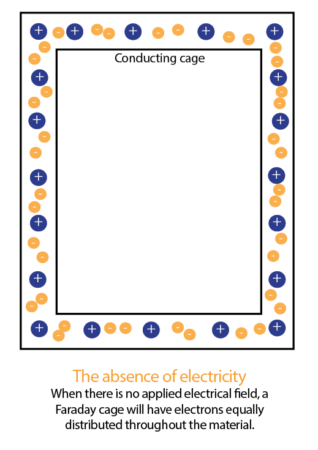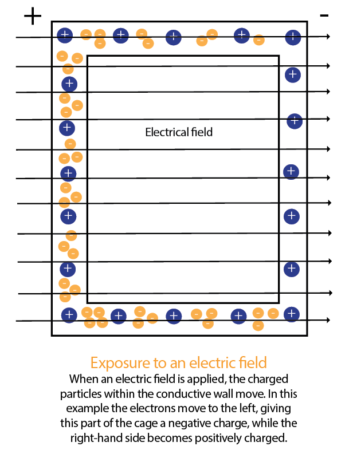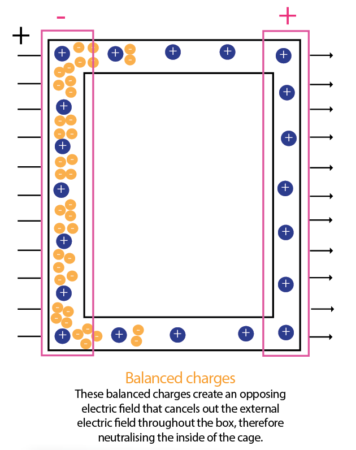How does a faraday cage work?
by Scott Dutfield · 18/07/2019

How do these conducting structures shield against electricity?
You might expect lightning hitting a car to be dangerous, but in fact if you are shut inside the vehicle you are safe. This is because an electrical charge applied to a conducting cage will travel around the edges, leaving the interior unaffected. Conducting boxes like this are called Faraday cages, named after British physicist Michael Faraday, who investigated this effect in the 19th century.
When a Faraday cage is exposed to an electric field, the negatively charged electrons on its surface move in response. This leads to one side of the cage having a negative charge and the other having a positive charge, inducing an electric field across the cage that opposes and cancels out the one being applied to the surface.
The materials and the size of the gaps on a cage can affect which wavelengths of electromagnetic radiation are blocked. This means that Faraday cages can also be used to shield against radio waves and microwaves. This makes them particularly useful for sensitive scientific experiments where electromagnetic interference is not wanted as it can skew the results.
Inside a faraday cage
How electrostatic induction helps to provide protection



This article was originally published in How It Works issue 109 written by Charlie Evans
For more science and technology articles, pick up the latest copy of How It Works from all good retailers or from our website now. If you have a tablet or smartphone, you can also download the digital version onto your iOS or Android device. To make sure you never miss an issue of How It Works magazine, subscribe today!




